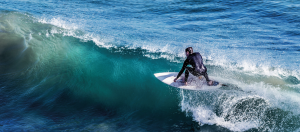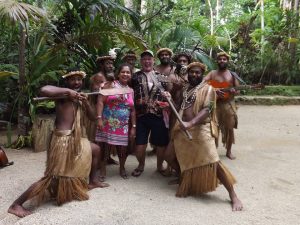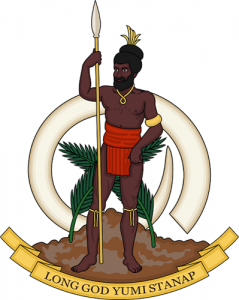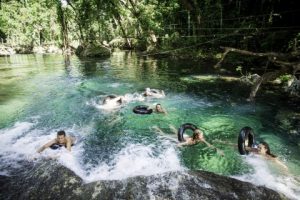 If you visit Vanuatu, here is a little tropical oasis to enjoy about half an hour from Port Vila.
If you visit Vanuatu, here is a little tropical oasis to enjoy about half an hour from Port Vila.
Eden on the River is 17km from town and it is a terrific spot for a couple of hours or even a whole day. You could also make it a stop as part of an around the island trip with a bus/driver or in a hire car.
It’s great for families with bridges to make exploring the rainforest fun, lots of swimming holes, mini-golf, guided tours, an animal farm, a playground and a café. You can pay for basic entry – 1000 vatu (AUD$12) per adult, children 4 to 14 half price and under three years free. This gives access to the tropical gardens, trails and swimming holes with no time limit and you can add other stuff on from there.
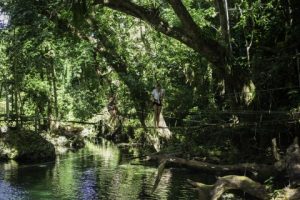 18-hole mini-golf costs 500 vatu or AUD$5, guided tours that take around two hours are 1200 vatu (AUD$15) for the botanical garden tour and 2200 vatu (AUD$25) for the Bridges of Eden tour. Tours usually start at 9:30am, 12:30pm and 2:30pm. Or you take the Big Day Combo that has all the above including a BBQ lunch for 7500 vatu (AUD$90).
18-hole mini-golf costs 500 vatu or AUD$5, guided tours that take around two hours are 1200 vatu (AUD$15) for the botanical garden tour and 2200 vatu (AUD$25) for the Bridges of Eden tour. Tours usually start at 9:30am, 12:30pm and 2:30pm. Or you take the Big Day Combo that has all the above including a BBQ lunch for 7500 vatu (AUD$90).
They don’t take credit cards but will accept cash in vatu, AUD, NZD or USD. Grab a bus from town or your resort or ring Eden to arrange a transfer on 7710765.
Here is a link to the Eden on the River website.


